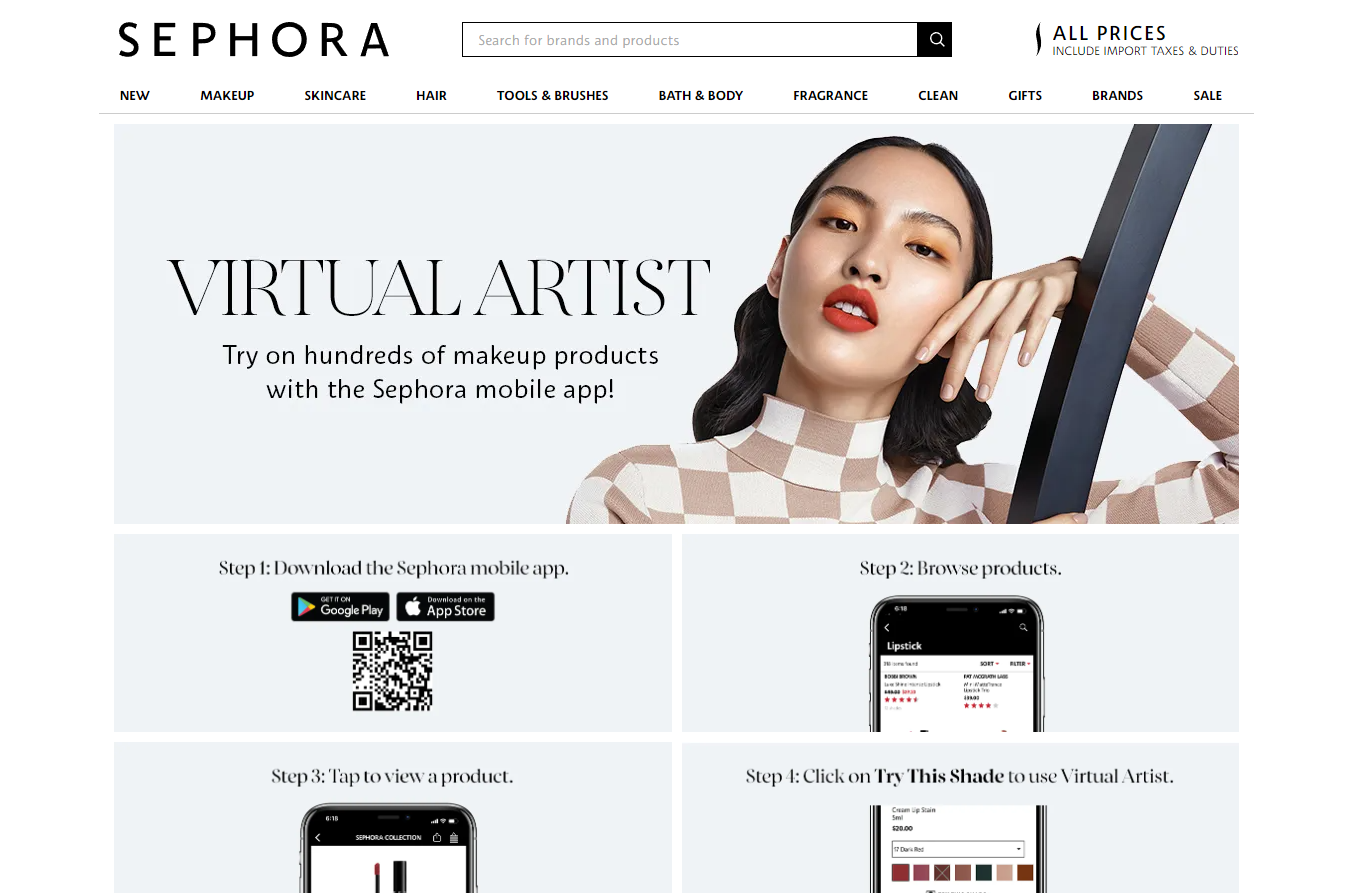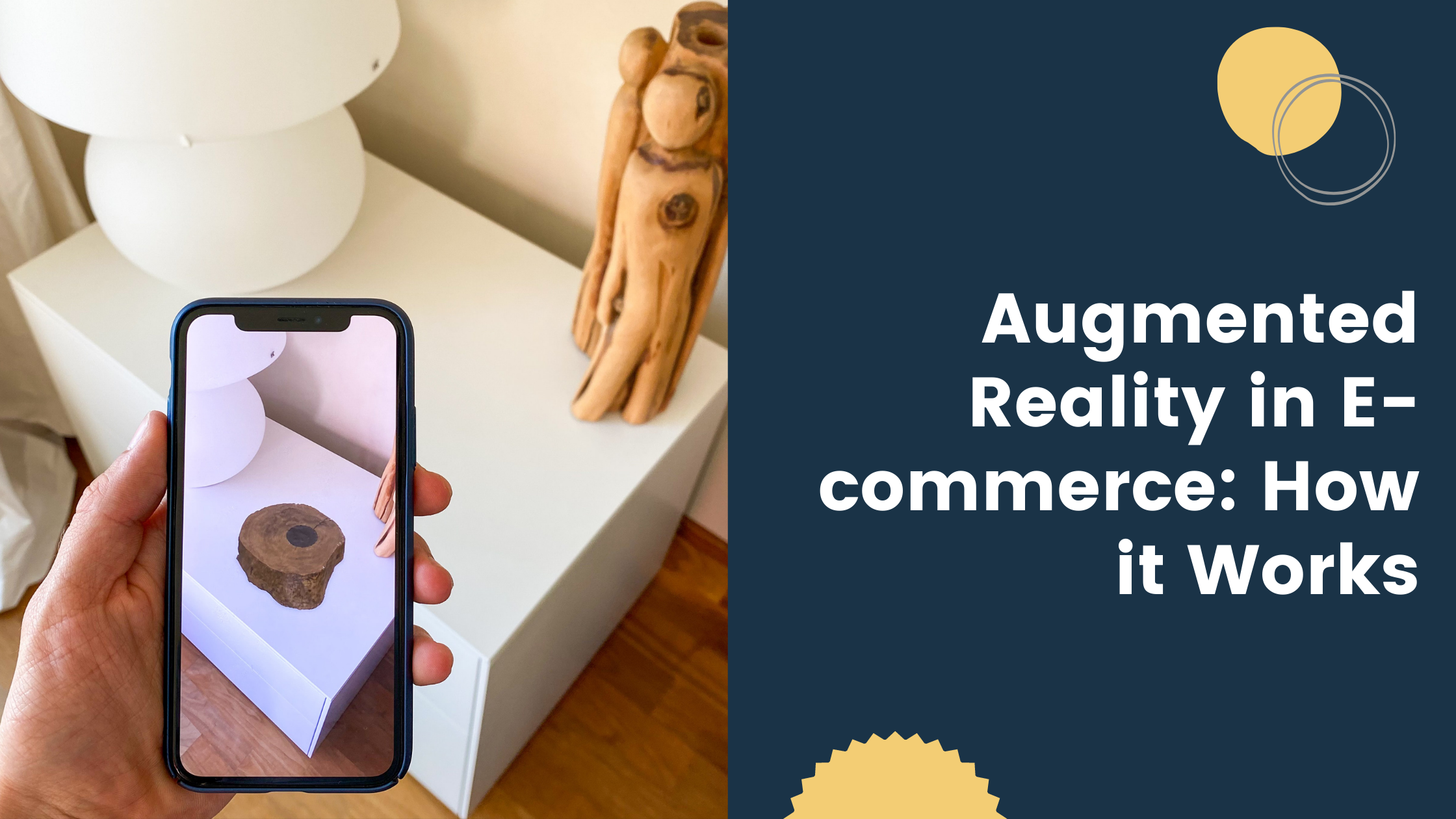Augmented Reality in E-commerce: How it Works
Augmented Reality in E-commerce: How it Works
As the world of e-commerce continues adapting to consumer trends, we see new technologies emerge that aim to enhance the online shopping experience. One such trend is the rise of augmented reality (AR), a technology that simulates real-time interaction with products and services. It can be challenging to achieve an immersive experience when shopping on a phone or computer screen, which is why companies use augmented reality aims to address it.
This article will discuss what augmented reality is about, how it works, and how it can benefit brands in providing a full sensory product experience for their target audience.
What is augmented reality in e-commerce?
Augmented reality is the process of recreating real-world experiences through computer-enhanced graphics. The technology combines audio and visuals to provide a composite view of a specific environment. Viewing a superimposed image elicits sensory stimuli that give the person a greater perception of a certain product or service.
It may sound complex at first, but there’s a good chance you’ve experienced AR before. Social media filters and mobile games like Pokemon Go are great examples of augmented reality in mainstream culture. Today, brands are leveraging the power of AR to generate brand awareness and capture the eyes of consumers.
IKEA is one of the first companies to integrate augmented reality by creating the IKEA Place app. Users can download the app and place IKEA products virtually into their space to see how they fit. Since then, other brands have followed suit, like Sephora, Burberry, and Gucci.
Why should you use augmented reality in your brand?
As the competition in the e-commerce space evolves, retail businesses are looking for innovative ways to stay ahead of the pack. Statista predicts that 28% of consumers in the USA will use AR when shopping online, thus indicating the technology’s rapidly evolving future. Augmented reality is one way to edge out competitors and keep your core audience interested in what you have to offer.
Here are three reasons why you should incorporate AR as part of your brand’s development:
1. Visualize product purchases
While online shopping is a convenient way to access products and services, it doesn’t always translate to customer satisfaction. From choosing the correct shoe size to buying a well-fitting shirt, customers often refer to size charts and customer reviews for an accurate representation (which sometimes doesn’t work).
To address this problem, brands started using augmented reality to help customers visualize the product before purchasing. Gucci comes to mind as a great example of how AR can help its customers make informed buying decisions. By adding an AR feature to their app, customers can visualize how the sneakers look on their feet in real-time.

The brand also collaborated with WANNA, a fashion-oriented AR platform, to release a pair of virtual sneakers for only $17.99. The strategy proved effective as the digital sneakers made it accessible for people to get their hands on a Gucci product and share them online.
By incorporating digital fashion with augmented reality, Gucci was able to generate leads and cater to a new audience.
2. Elevate the online shopping experience
Half the joy of shopping in brick-and-mortar stores is trying out different outfits, looks, and makeup. There’s a reason some people still prefer traditional shopping because online shopping fails to mimic the full sensory experience. Sephora saw an opportunity to use augmented reality to help beauty shoppers choose the right makeup for their needs.

Their virtual artist app lets users try hundreds of makeup looks and pair them with the outfit they plan to wear. The app also has virtual tutorials to guide first-time shoppers on choosing the correct shade. They can experiment with endless cheek colors, highlighters, and face palettes to give themselves a virtual make-over.
In this case, the virtual experience is arguably better than physical shopping because users can try on any makeup with one simple click. It’s simple and convenient, and the AR aspect elevates the shopping experience for consumers.
3. Generate brand interest
When people hear about augmented reality, it piques their interest in what the experience is all about. Implementing AR should be a strong consideration if you want to make waves across the e-commerce space. A good example is Inditex, owner of clothing brand Pull and Bear. The company recently announced an AR game called Pacific Game in hopes of connecting the world of fashion to video games.

The game was made available on Facebook, Instagram, and Pull and Bear’s website. Users take a virtual trip from California to Tokyo, collecting points while avoiding obstacles throughout the journey. It’s a clever move from Pull and Bear, considering that Gen Z is a digitally connected generation, with around 81% of them as avid gamers.
By expanding to the gaming market, the retail brand was able to generate brand interest and draw the attention of Gen Z customers to their products.
How can you integrate augmented reality into your brand?
So you’ve decided to include augmented reality into your brand and are interested in learning how to do it. Before you experiment with AR, there are three key considerations you need to keep in mind:
1. Identify the need for augmented reality
The first thing you need to do is figure out how you plan on using A. Do you see a need for adding augmented reality to your website? How will users interact with it once it’s ready to use? Keep in mind that there’s more to AR than just fancy effects and animations, as it needs to be functional to add value to the shopper’s experience.
Let’s say you run a dental practice, and your area of expertise is in cosmetic dentistry. You can utilize AR by letting patients try on different veneers, crowns, and implants to transform their smiles. Kapanu is a good example of a dental AR solution that offers augmented reality and machine learning to enhance the teledentistry experience.
Once you identify the need for AR in your brand, you can proceed to the next step: finding the right augmented reality tool for you.
2. Pick the right AR solution
There are plenty of AR solutions available today, and it can be challenging to pick the right one for your needs. To help you make an informed choice, here are four key factors to consider:
- Supported devices – You want to ensure that the AR tool you choose is compatible with desktop and mobile devices. Considering that most people use their smartphones for browsing websites, the AR tool should be able to support a broad range of devices.
- Supported operating systems – A versatile AR solution should be compatible with most operating systems, including Windows, Android, iOS, macOS, and Linux.
- Features – Different AR tools will come with different features. Some apps focus on GPS data, while others are gyroscope or marker-based. Full-body tracking solutions are also available, though we rarely see them in the e-commerce space because of their complexity.
- Pricing – Most AR tools come with a trial and a paid version. Of course, the latter is more robust compared to the free option. Try out the free version first if you want to dabble with augmented reality. You can opt for the paid version to unlock its full potential if you like the product.
3. Market your new AR tool
After successfully creating an augmented reality feature for your brand, the next step is to market it to your customers. Use social media to announce your new AR tool and send a message to your email list. You can create a demo video to show how the AR works and create in-app instructions for users to follow.
Make sure your content is shareable so users can share their AR experiences with friends and family. The goal is to build interest in your new AR feature to capture new leads, so the more exposure it gets, the better it’ll be for your brand.
Conclusion
Augmented reality is reshaping how consumers interact with their favorite brands online. As more and more companies adopt this technology, buyers will look to experience AR in any way, shape, or form. When implemented correctly, augmented reality can mimic the full sensory experience of physical shopping while maintaining the convenience of shopping online.
It’s important to assess the financial health of your business to ensure maximum profitability. If you need assistance with expert bookkeeping services, our team is ready to help you. Simply fill out the form below, and we’ll get back to you as soon as possible.








